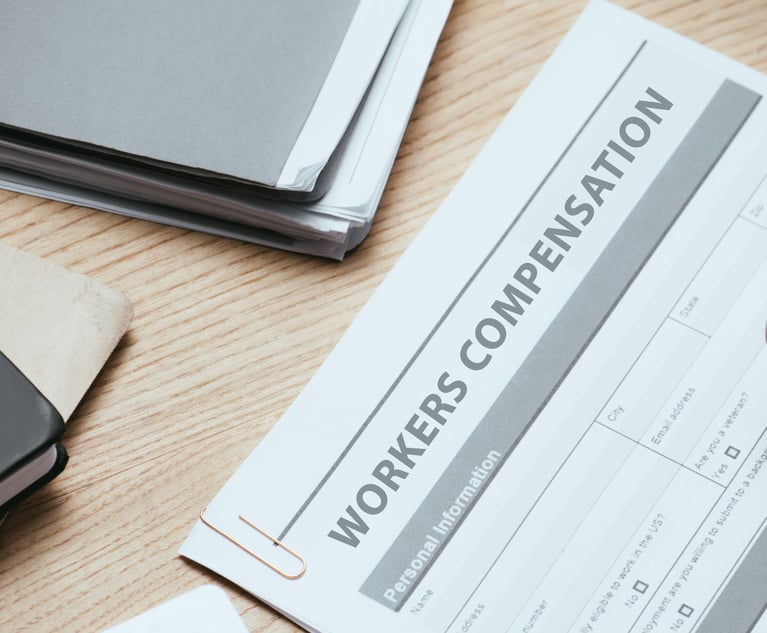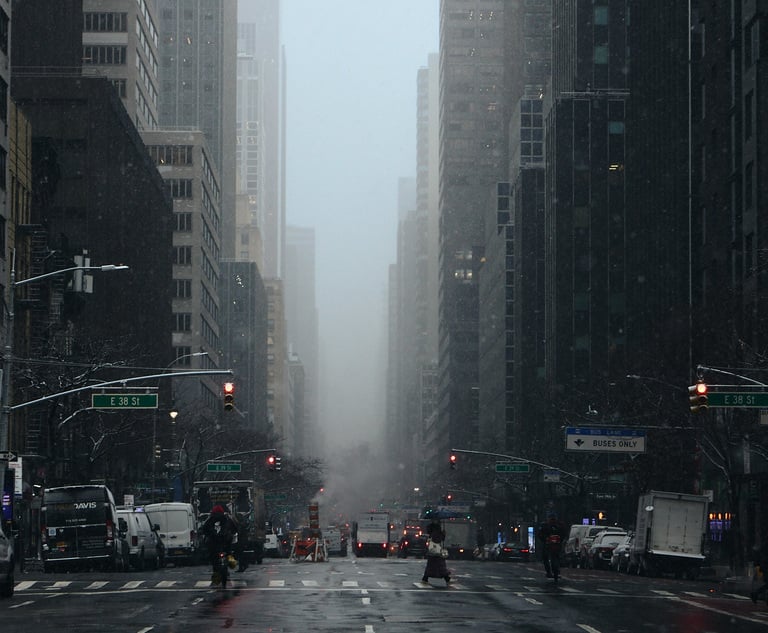Don't Allow Insurers to Weaken the Standard Applicable to the 'Expected or Intended' Coverage Defense
"In determining whether an organization's potential liability for an employee's sexual misconduct is covered, the relevant question is whether the harm was expected or intended from the organization's standpoint," write Joshua L. Blosveren and Bradley J. Nash.
July 26, 2024 at 10:00 AM
11 minute read
 Joshua L. Blosveren, left, and Bradley J. Nash, right, of Hoguet Newman Regal & Kenney. Courtesy photos
Joshua L. Blosveren, left, and Bradley J. Nash, right, of Hoguet Newman Regal & Kenney. Courtesy photos
Introduction
In an insurance coverage action currently pending in New York state court styled Century Indemnity v. The Archdiocese of N.Y., 2023 N.Y. Slip Op. 34420 (N.Y. Sup. Ct. 2023), the trial court granted the policyholders' motion to dismiss, holding, in part, that the Chubb insurers improperly had attempted to shift the burden of proof as to whether the policyholders "expected or intended" the sexual abuse alleged in more than 1,000 underlying Child Victims Act suits to the policyholder. Earlier this year, the Appellate Division, First Department largely reinstated Chubb's complaint without addressing the "expected or intended" defense. Century Indemnity v. The Archdiocese of New York, 226 A.D.3d 557 (1st Dep't 2024).
In another recent case involving environmental damages, Century Indemnity v. Brooklyn Union Gas, 75 Misc. 3d 1205, 2022 N.Y. Slip Op. 50388, 166 N.Y.S.3d 845 (N.Y. Sup. Ct. 2022), Chubb argued, unsuccessfully, that the standard for whether certain damage was "expected or intended" by a policyholder was whether there had been a "substantial probability of damage."
New York law unequivocally places the burden of proving the enforceability of coverage exclusions or limitations on the insurer. Moreover, New York law is clear that more foreseeability of harm is insufficient to demonstrate that the harm was expected or intended. Thus, permitting insurers to avoid coverage in sexual abuse cases or other third-party liability cases wherever there was a "substantial probability of damage" would turn bedrock insurance jurisprudence on its head.
This content has been archived. It is available through our partners, LexisNexis® and Bloomberg Law.
To view this content, please continue to their sites.
Not a Lexis Subscriber?
Subscribe Now
Not a Bloomberg Law Subscriber?
Subscribe Now
NOT FOR REPRINT
© 2025 ALM Global, LLC, All Rights Reserved. Request academic re-use from www.copyright.com. All other uses, submit a request to [email protected]. For more information visit Asset & Logo Licensing.
You Might Like
View All


New York State Authorizes Stand-Alone Business Interruption Insurance Policies
6 minute read
Unit Owners Sued Board for Failure To Maintain Adequate Fire Insurance: This Week in Scott Mollen’s Realty Law Digest
Law Firms Mentioned
Trending Stories
- 1ACC CLO Survey Waves Warning Flags for Boards
- 2States Accuse Trump of Thwarting Court's Funding Restoration Order
- 3Microsoft Becomes Latest Tech Company to Face Claims of Stealing Marketing Commissions From Influencers
- 4Coral Gables Attorney Busted for Stalking Lawyer
- 5Trump's DOJ Delays Releasing Jan. 6 FBI Agents List Under Consent Order
Who Got The Work
J. Brugh Lower of Gibbons has entered an appearance for industrial equipment supplier Devco Corporation in a pending trademark infringement lawsuit. The suit, accusing the defendant of selling knock-off Graco products, was filed Dec. 18 in New Jersey District Court by Rivkin Radler on behalf of Graco Inc. and Graco Minnesota. The case, assigned to U.S. District Judge Zahid N. Quraishi, is 3:24-cv-11294, Graco Inc. et al v. Devco Corporation.
Who Got The Work
Rebecca Maller-Stein and Kent A. Yalowitz of Arnold & Porter Kaye Scholer have entered their appearances for Hanaco Venture Capital and its executives, Lior Prosor and David Frankel, in a pending securities lawsuit. The action, filed on Dec. 24 in New York Southern District Court by Zell, Aron & Co. on behalf of Goldeneye Advisors, accuses the defendants of negligently and fraudulently managing the plaintiff's $1 million investment. The case, assigned to U.S. District Judge Vernon S. Broderick, is 1:24-cv-09918, Goldeneye Advisors, LLC v. Hanaco Venture Capital, Ltd. et al.
Who Got The Work
Attorneys from A&O Shearman has stepped in as defense counsel for Toronto-Dominion Bank and other defendants in a pending securities class action. The suit, filed Dec. 11 in New York Southern District Court by Bleichmar Fonti & Auld, accuses the defendants of concealing the bank's 'pervasive' deficiencies in regards to its compliance with the Bank Secrecy Act and the quality of its anti-money laundering controls. The case, assigned to U.S. District Judge Arun Subramanian, is 1:24-cv-09445, Gonzalez v. The Toronto-Dominion Bank et al.
Who Got The Work
Crown Castle International, a Pennsylvania company providing shared communications infrastructure, has turned to Luke D. Wolf of Gordon Rees Scully Mansukhani to fend off a pending breach-of-contract lawsuit. The court action, filed Nov. 25 in Michigan Eastern District Court by Hooper Hathaway PC on behalf of The Town Residences LLC, accuses Crown Castle of failing to transfer approximately $30,000 in utility payments from T-Mobile in breach of a roof-top lease and assignment agreement. The case, assigned to U.S. District Judge Susan K. Declercq, is 2:24-cv-13131, The Town Residences LLC v. T-Mobile US, Inc. et al.
Who Got The Work
Wilfred P. Coronato and Daniel M. Schwartz of McCarter & English have stepped in as defense counsel to Electrolux Home Products Inc. in a pending product liability lawsuit. The court action, filed Nov. 26 in New York Eastern District Court by Poulos Lopiccolo PC and Nagel Rice LLP on behalf of David Stern, alleges that the defendant's refrigerators’ drawers and shelving repeatedly break and fall apart within months after purchase. The case, assigned to U.S. District Judge Joan M. Azrack, is 2:24-cv-08204, Stern v. Electrolux Home Products, Inc.
Featured Firms
Law Offices of Gary Martin Hays & Associates, P.C.
(470) 294-1674
Law Offices of Mark E. Salomone
(857) 444-6468
Smith & Hassler
(713) 739-1250






